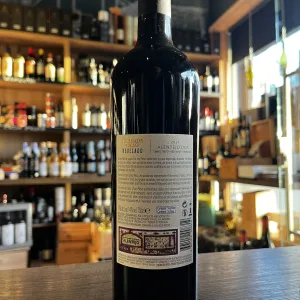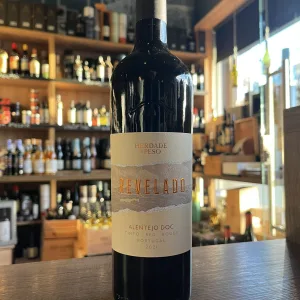Cartuxa is a fascinating winery located in the Évora region of the Alentejo.
Vineyards were first planted in 1517 by the Jesuits and, since that time, the monastery and vineyards have changed hands from private to state ownership and back again.
What makes the winery quite unique, though, is that the last private owner Vasco Maria Eugénio, who was childless, created a charitable foundation to which he bequeathed the estate (now operating across 1050 hectares) and all the winery’s trademarks so that all the profits from the winery go directly into supporting a university, hospital, social housing and other welfare institutions. The foundation which is 60 years old next year, still operates on a non-profit basis, and has been instrumental in keeping the community in this area blessed with social and cultural institutions.
The first historical mentions of Pêra-Manca wines can be traced back to the 15th Century; when Pedro Alvares Cabral discovered Brazil in 1500 he was carrying bottles of the stuff and, tasting its modern incarnations, it’s not surprising that it survived the voyage – this is an immensely strong and sturdy wine with powerful acidity and tannins that are built for the long ageing.
Soon after the Pêra-Manca brand was patented in the 1870s, the wine won a number of gold medals in Bordeaux but sadly, after phylloxera and the death of the vineyard owner production of the wine ceased until Cartuxa revived it.
Pêra-Manca celebrates indigenous grape varieties, in this case just two – Aragonês and Trincadeira – whose proportions vary in the wine according to the climate of the growing season. The vineyards these grapes come from have to be over 30 years old and carry the best expressions of the varieties from the same genetic origin and, because selection depends on the slow, perfect ripening of the fruit, the wine is only ever made in the best vintages, normally three out of every decade. To understand Pêra-Manca you first have to understand these two grapes and how they complement one another in the blend. In a nutshell, Trincadeira brings freshness and acidity (particularly important in such a hot climate) while Aragonês, which many will know better as Tempranillo or Tinta Roriz, brings flavour and tannins.
Trincadeira is not an easy grape variety to work with. It has prolific vegetation which has to be managed with careful canopy control. Aragonês, on the other hand, is extremely easy to work with although in very hot weather all the leaves can dry out in one week. The variety has a lower level of acidity than Trincadeira but, again, in hot weather the fruit can lose half of its acidity in a matter of a few days and its tannins become very hard and angular.
So, according to the vintage, the proportions of each wine are dialled up or down. In the six vintages we tasted the percentage of Trincadeira varied from 30% to 60%. And, just because a vintage might be very good in Alentejo, it does not follow that the conditions are right for making a Pêra-Manca. 2004, for example, was an excellent year in the region but the decision was made to pass on making the wine.
Voted best wine in the world by 54 million users in the Vivino world of wine


































Reviews
There are no reviews yet.